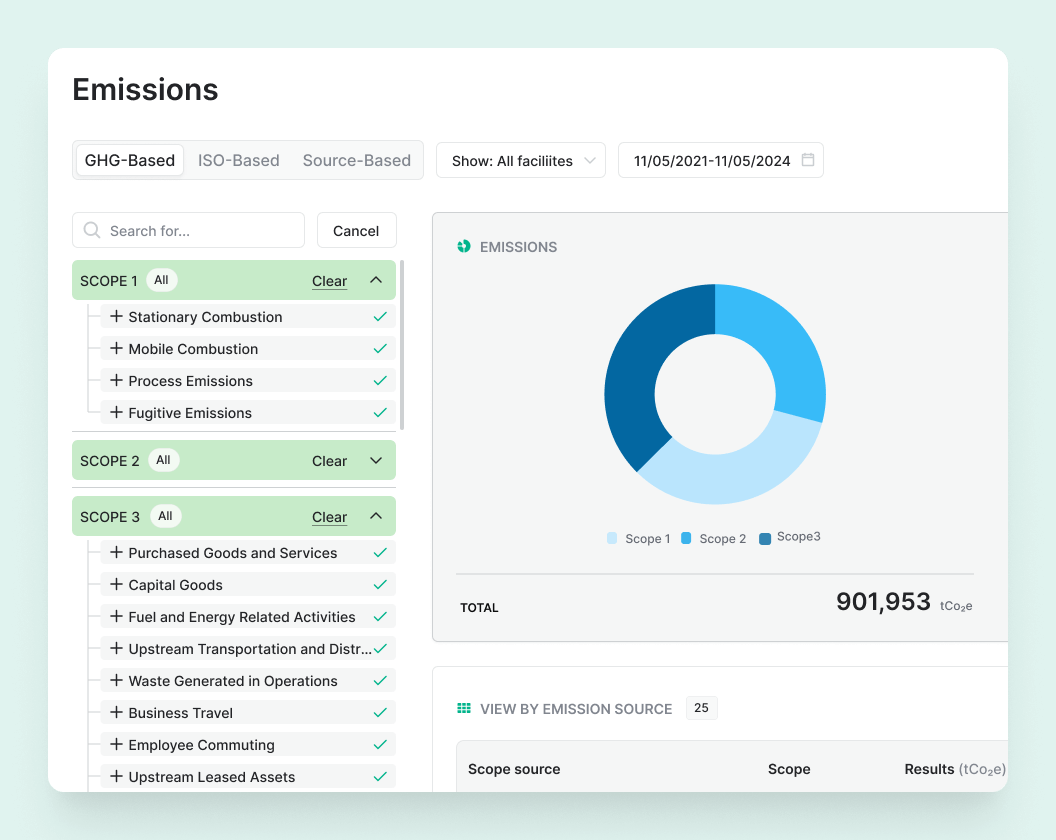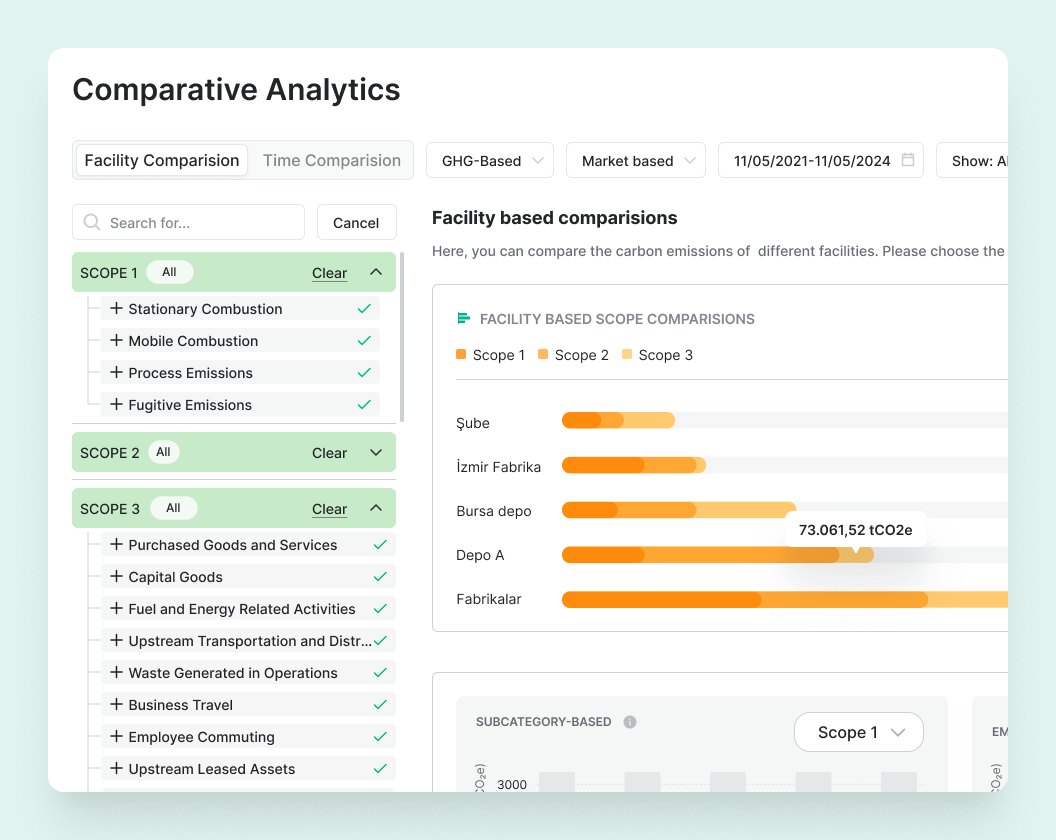Analyze Your Emissions
Operational Clarity on Carbon Performance
Carbondeck delivers the emissions intelligence your leadership needs — structured, visualized, and aligned with GHG Protocol and ISO 14064 standards.
Explore Your Emissions BreakdownFrom “What Now?” to “Here’s What to Do.”
Board-Ready Emissions Intelligence
Scope 1-2-3 emissions across all facilities, sources, and time periods — with breakdowns by region, activity, and category. From trend lines to facility comparisons, you get the clarity needed for internal discussions and board-level reporting.
Smart Detection of Risks and Opportunities
Flag spikes, uncovers inefficiencies, and highlights anomalies or gaps. Carbondeck helps you focus on the emission sources that matter most and supports leadership in identifying actionable next steps.
Automated Supplier Emissions Tracking
Carbondeck calculates Scope 3 emissions directly from uploaded documents and showcases the biggest contributors in a dedicated supplier dashboard — no emails or follow-ups required.
FAQ
What is the difference between Scope 1, Scope 2, and Scope 3 emissions?
These three scopes are defined by the GHG Protocol to help organizations categorize their emissions sources:
- Scope 1 – Direct emissions: Emissions from sources you own or control directly (e.g. company vehicles, on-site fuel combustion, industrial processes).
- Scope 2 – Indirect energy emissions: Emissions from the generation of purchased electricity, heating, cooling, or steam consumed by your organization.
- Scope 3 – Indirect value chain emissions: All other indirect emissions that occur in your value chain — from supplier activities to product use, business travel, employee commuting, waste, and more.
Scope 1 and 2 are typically easier to measure, while Scope 3 requires deeper data collection and supplier engagement — but is essential for understanding your full climate impact.
Why is carbon accounting important for companies?
Carbon accounting enables companies to understand, manage, and reduce their environmental impact. It supports compliance with emerging regulations (like CBAM and CSRD), meets investor and stakeholder expectations, and strengthens climate-related disclosures (e.g. CDP, IFRS, SBTi). It also helps identify emission hotspots, cut costs, and build credibility in sustainability communications.
How to measure and report an organization’s carbon footprint?
Measuring a carbon footprint involves three key steps:
- Identify emission sources across your operations and value chain — including direct fuel use (Scope 1), purchased electricity (Scope 2), and upstream/downstream activities (Scope 3).
- Collect activity data, such as utility bills, fuel records, procurement spend, or logistics volumes.
- Apply emission factors from recognized databases (e.g. DEFRA, IPCC, Türkiye Ulusal Sera Gazı Emisyon Envanteri) to calculate total emissions in CO2 equivalents.
To report your footprint:
- Organize emissions data by scope and category using frameworks like the GHG Protocol or ISO 14064.
- Report through voluntary platforms such as CDP questionnaires or include disclosures in mandatory reports under regulations like CSRD (or IFRS S2 where adopted).
With Carbondeck, measuring and reporting your footprint becomes a guided, automated process. Emission sources and activity data are uploaded or auto-extracted, then matched to the right scopes and emission factors by AI Agents. The Reporting Officer ensures all outputs are structured under recognized standards like the GHG Protocol or ISO 14064, and generates audit-ready reports or exports with a single prompt. Instead of chasing data and formatting disclosures, your team moves directly from raw files to credible, regulator-ready results.
How does carbon management align with corporate sustainability strategy?
Carbon management is a foundational pillar of any corporate sustainability strategy. It enables organizations to quantify their climate impact, set reduction targets, and demonstrate tangible progress toward environmental goals. When integrated effectively, it enhances ESG performance, supports credible disclosures (e.g. CDP, TCFD), and strengthens reputation with customers, partners, and investors.
How to integrate carbon management into corporate sustainability goals?
Integration starts with calculating your carbon footprint across Scope 1, 2, and 3 emissions. From there, companies can define reduction targets (e.g. SBTi), align actions with broader ESG and net zero commitments, and embed tracking into regular reporting cycles. Carbondeck simplifies this process by centralizing data, automating calculations, and ensuring outputs are audit ready and aligned with global standards.
Have more questions? Visit Carbondeck Help Center.




